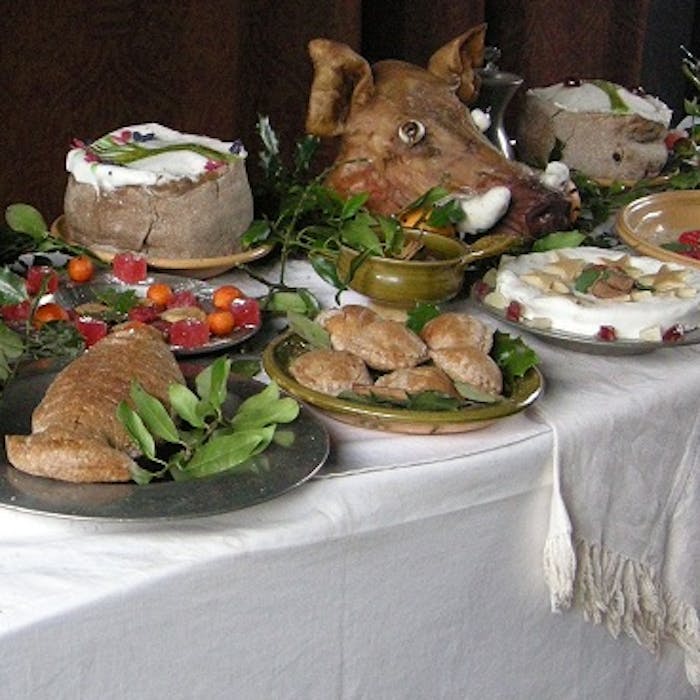
The Tudor Christmas
Christmas celebrations in the Tudor period were all about feasting and a break from the working routine. This period saw the arrival of the traditional turkey dinner.
Tudors fasted on Christmas Eve, and cheese, eggs or meat were forbidden..
Christmas Day for the Tudors began at church with masses and religious pieces sung before tapers were lit and it was time to return home for a meal such as a boar’s head.
Turkey as a Christmas tradition was introduced in the 1520s and King Henry VIII was among the first to enjoy it as part of a festive meal. They were seen as an exotic delicacy and were walked from Norfolk and Suffolk all the way to market in London.
Of course, the Royal household held especially lavish Christmas banquets. The traditional choices were beef, venison and wild boar, but the Tudors also ate a range of wild animals and birds including badger, blackbird and woodcock.
Large feasts also could include peacock, souse (made from pickled pigs feet and ears) and roast swan. A popular Tudor centrepiece was the boar’s head, which would be carried into the banqueting hall on a gold or silver dish accompanied by trumpets and songs.
The Tudors also ate Christmas Pie, made of a pigeon, placed inside a partridge, inside a chicken, inside a goose, inside a turkey, inside a pastry case called a coffin, served with hare and other game birds on the side.
‘Mince pyes’ were also enjoyed as part of a Tudor Christmas and had a religious significance, containing 13 ingredients to mark Christ and his disciples - including dried fruits and spices as well as chopped mutton.
On Twelfth Night a special Twelfth cake was enjoyed. It was a fruitcake containing a coin or a dried bean. The person to find the hidden object became King or Queen for the evening and host of the entertainment.
Christmas was about rest for the Tudors. A time when work on the land stopped and women stopped spinning. Flowers were put on the spinning wheels to stop their use.
Homes were decorated on Christmas Eve with mistletoe, holly, ivy, yew and laurel.
A large log was chosen on the day before Christmas, decorated with ribbons and laid on the hearth. It was then kept alight throughout the twelve days of Christmas (25th December to 6th January).
Wassailing was also a part of Tudor Christmas celebrations. The tradition was to drink a toast to the fruit trees to produce a good crop next year. Large wooden bowls holding up to a gallon of punch would be filled with hot ale or cider, sugar, spices, and apples, with a crust of bread at the bottom. The bowl was offered to the most important person in the household first, who would drink and pass it on.
Further reading
- Christmas Dinners Throughout History - English Heritage
- What a Tudor Christmas was like - Hever Castle
Links to external websites are not maintained by Bite Sized Britain. They are provided to give users access to additional information. Bite Sized Britain is not responsible for the content of these external websites.
